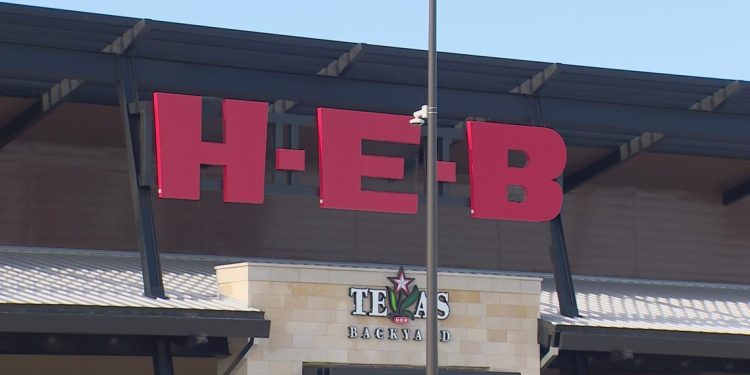H-E-B had humble beginnings. What started as a mom-and-pop operation is now the fifth-largest privately-held company in the United States.
H-E-B is synonymous with Texas, but only recently has the chain begun expanding into the DFW metroplex.
With Wednesday’s ribbon-cutting ceremony celebrating the grocer’s newest store in Mansfield, Texas, and at least nine more stores planned in the coming years, let’s look back at the 119-year history of Texas’ beloved grocery store chain.
Who is the founder of H-E-B?
This Article Includes
Many know that H-E-B stands for Howard E. Butt, who is largely credited with founding the grocery store chain. But, contrary to popular belief, it was Howard’s mother, Florence Butt, who opened the first H-E-B location.
Florence Butt was born in Buena Vista, Mississippi, in 1864. She married a pharmacist named Clarence C. Butt, and together they had three sons.
The family lived in Memphis, Tennessee, until 1904, when Clarence Butt contracted tuberculosis. Following his diagnosis, the Butts moved to San Antonio, hoping the drier climate would help Clarence’s condition. After a year, the family moved again to Kerrville, Texas.
In 1905, with her husband unable to work, Florence Butt put together $60 of grocery stock and opened the C.C. Butt Grocery on the ground floor of her family’s Kerrville home.
She ran the store until 1919, when her son Howard took over operations.
When did H-E-B become H-E-B?
As a child, Howard Butt helped his mother deliver groceries to customers in a wagon. Throughout high school, he helped manage the family store. After graduating in 1914, he set his sights on California.
Butt hitchhiked to California, where he harvested grapes. His stay on the West Coast was short, as he soon enlisted in the Navy to serve in World War I. Before enlisting, he gave himself the middle name Edward.
Butt returned home from his service to take over the family business in 1919. Back in Kerrville, he and his mother managed the family store together and switched to a self-service grocery store model in 1921. (Before Piggly Wiggly’s opening in Memphis in 1916, most grocery stores — including C.C. Butt Grocery — operated on a “charge and deliver” system.)
1926 marked the first expansion of the family store as they opened a second location in Del Rio, South Texas. From there, the chain kept growing.
In 1928, Butt borrowed $38,000 — nearly $800,000 in today’s money — to open three more stores in the Rio Grande Valley near the U.S.-Mexico border.
The chain rapidly expanded from there, entering Corpus Christi, Austin, and San Antonio within 11 years. Around that time, the company’s headquarters moved to Corpus Christi.
In 1935, Butt changed the company name to H.E. Butt Grocery.
By 1946, he finally, and formally, shortened it to H-E-B.
From Grocery Store to Supermarket
In 1952, H-E-B evolved by opening its first “supermarket.” At the time, having a place where shoppers could find their baker, butcher, and pharmacist all under one roof was quite novel.
This shift quickly propelled H-E-B to become the largest grocer in South and Central Texas.
In 1985, the chain officially relocated its headquarters to San Antonio, where it remains today.
In 1997, H-E-B expanded internationally by opening its first store in Monterrey, Mexico. Today, the chain operates over 50 stores in Mexico, surpassing $1 billion in annual sales there by 2012.
Money, Money, Money
Today, H-E-B runs over 420 stores across Texas and Mexico.
Not all of these stores are branded as H-E-B, though.
The chain actually operates five different brands: H-E-B stores, H-E-B Plus, Central Market, Mi Tienda, and Joe V’s Smart Shop. Each brand targets different market segments.
H-E-B Plus stores function like modern superstores, offering electronics and other non-traditional items alongside supermarket goods.
Central Market caters to upper-end shoppers willing to spend more on high-quality ingredients.
Mi Tienda offers a traditional Mexican grocery experience, with fresh tortillas and pan dulces made daily in-house.
Joe V’s Smart Shop provides a budget-friendly shopping experience with lower-cost ingredients.
According to Forbes, H-E-B earned $43.6 billion in 2023, making it the fifth-largest privately held company in the U.S. (Just two spots ahead of another regionally significant grocery store: Publix.)
Forbes also notes that the Butt family ranks as the 20th richest family in the country, owning an estimated 90% stake in the grocery chain.
Their wealth is poised to grow further. After 119 years in Texas, H-E-B has recently started expanding into Dallas-Fort Worth. The U.S. Census Bureau estimates DFW’s population at 8.1 million, making it the most populous metro region in Texas and the fastest-growing in the country.
There is considerable excitement among North Texans as H-E-B continues its entry into the region. If the Texas-based grocer captures a significant market share in DFW, it could soon achieve a top-three ranking among the wealthiest private companies.
Read More:
- 9 people were shot, and four others were injured in a mass shooting in Montgomery
- 3 Alabama men caught in a Florida rip current died one day after a couple drowned on vacation

